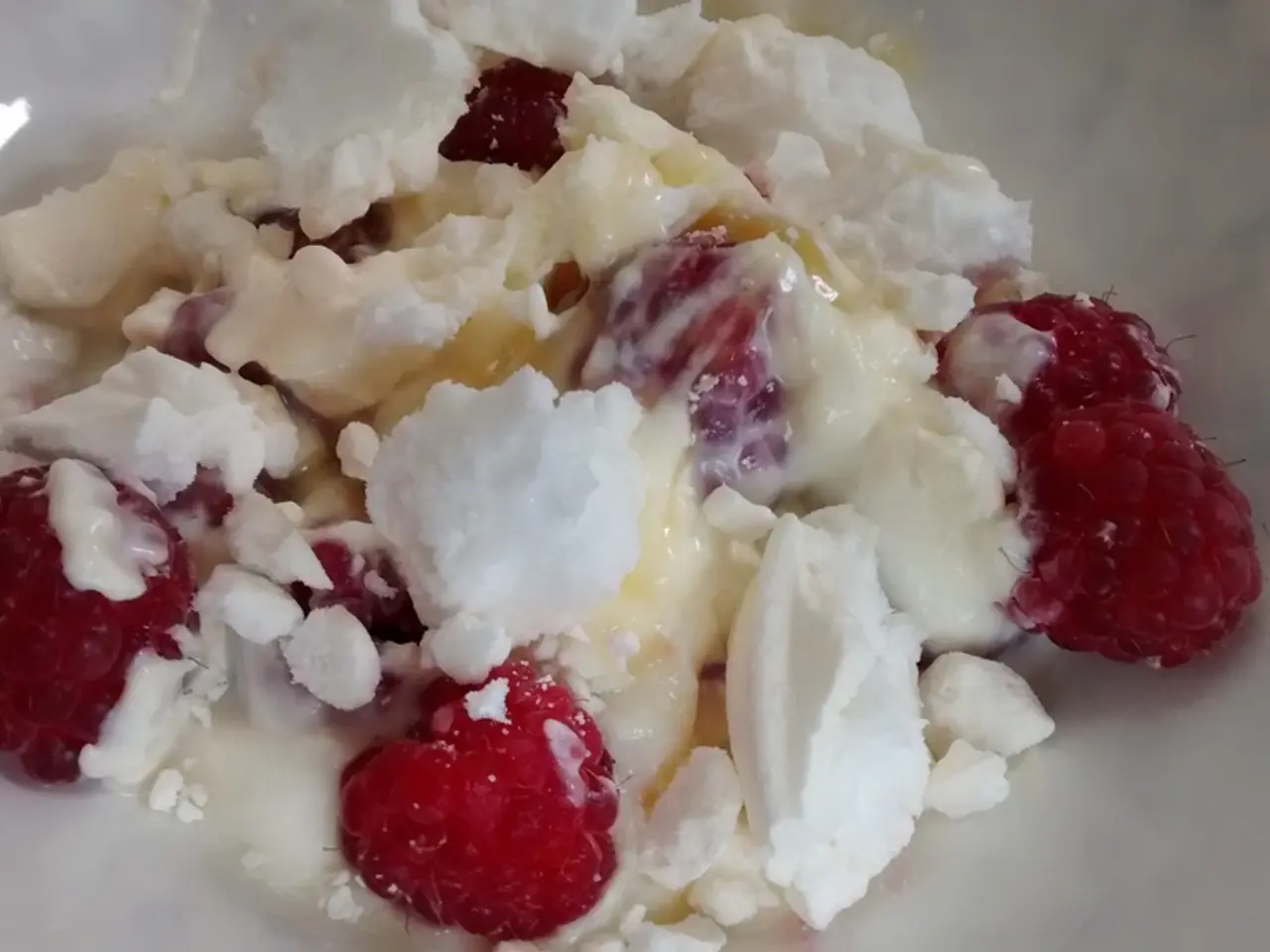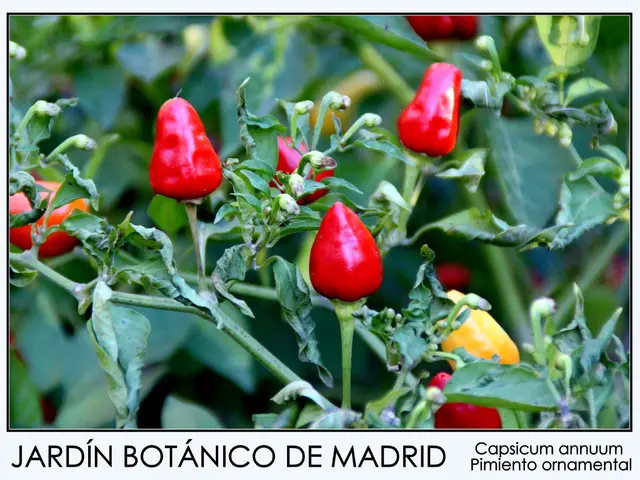Connection between Bananas and Lyme Disease: Advantages and Further Insights
Lyme disease, a vector-borne illness caused by the bacterium Borrelia burgdorferi and transmitted through the bite of black-legged ticks, can have far-reaching effects on a person's health, affecting the joints, heart, skin, and nervous system. While the primary treatment for Lyme disease remains antibiotic therapy, dietary management plays a significant role in addressing associated conditions and inflammatory symptoms.
For many Lyme disease patients, dietary restrictions are essential for managing gastrointestinal symptoms, food sensitivities, and inflammation. For instance, individuals with mast cell activation syndrome (MCAS) or histamine intolerance often avoid fermented foods, alcohol, leftovers, and certain fruits to reduce flare-ups. Those with alpha-gal syndrome must avoid red meat and gelatin, while patients with small intestinal bacterial overgrowth (SIBO) or gut dysbiosis may follow low-FODMAP or sugar-free diets to ease gastrointestinal symptoms. Avoiding alcohol is generally advised due to its potential to exacerbate symptoms and interfere with treatment.
While there is no definitive clinical evidence that specific diets cure or directly treat Lyme disease or post-treatment Lyme disease syndrome (PTLDS), anti-inflammatory and restrictive diets such as gluten-free, low-histamine, and low-FODMAP diets are common approaches to reduce symptom flares related to gut and immune dysfunction.
From a broader clinical perspective, PTLDS is thought to involve complex immune and inflammatory processes rather than active infection alone. While anti-inflammatory diets may theoretically support the body's immune regulation and reduce chronic inflammation, there is currently no robust scientific data directly linking such diets to improved outcomes in PTLDS.
However, anecdotal reports from the Lyme community reveal highly individualized dietary responses, ranging from gluten-free to carnivore diets, emphasizing that nutritional approaches are often personalized and experimental. Ongoing research continues to investigate interventions that may improve treatment outcomes and mitigate chronic symptoms, though current management emphasizes medical treatment and supportive symptom care rather than dietary cure.
In addition to diet, probiotics can support gut health, reduce inflammation, strengthen immunity, and promote the growth of good bacteria in the gut. Foods high in probiotics include yogurt, kefir, kimchi, sauerkraut, and tempeh. Prebiotics, which stimulate the immune system through their effect on the gut microbiota and reduce inflammation by increasing the expression of anti-inflammatory cytokines while decreasing the expression of pro-inflammatory cytokines, can be found in foods like bananas.
Other foods that may help with Lyme disease include fish, fruits and vegetables, whole grains, green tea, turmeric, ginger, herbs and spices, and foods high in antioxidants such as vitamin A, vitamin C, vitamin E, beta carotene, lycopene, lutein, selenium, and zinc. These foods can help counteract inflammation and support the body's immune system.
Lyme disease triggers the production of inflammatory cytokines, leading to oxidative stress and inflammation in the body. Bananas, with their anti-inflammatory, antimicrobial, antioxidant, anticancer, and antidiabetic properties, can help counteract these effects and support the body's immune system.
A person with Lyme disease may want to avoid foods containing common inflammatory triggers, including processed foods, sugar, refined carbohydrates, saturated fats, trans fats, and dairy products that do not contain probiotics. A 2022 study found that coenzyme Q10, an antioxidant supplement, can reduce fatigue, counter tissue damage, address abnormal heart function, and lower oxidative stress in a person with Lyme disease.
In summary, while there is no specific diet for Lyme disease, an anti-inflammatory diet may help reduce symptoms and promote recovery. A person with Lyme disease should consult a healthcare professional or allergist to confirm food allergies and avoid unnecessary dietary restrictions. If you suspect you have been bitten by a tick or are experiencing early symptoms of Lyme disease, it is crucial to seek medical attention promptly.
- A Lyme disease patient might find it necessary to restrict foods to manage gastrointestinal symptoms, food sensitivities, and inflammation.
- Those with mast cell activation syndrome (MCAS) or histamine intolerance might avoid fermented foods, alcohol, leftovers, and certain fruits.
- Individuals with alpha-gal syndrome must exclude red meat and gelatin from their diet.
- Patients with small intestinal bacterial overgrowth (SIBO) or gut dysbiosis may follow low-FODMAP or sugar-free diets.
- Abstaining from alcohol is generally advised since it may worsen symptoms and interfere with Lyme disease treatment.
- Anti-inflammatory diets like gluten-free, low-histamine, and low-FODMAP diets can help reduce gastrointestinal and immune system flare-ups related to Lyme disease.
- From a broader clinical perspective, post-treatment Lyme disease syndrome (PTLDS) is thought to be more complex than active infection, involving immune and inflammatory processes.
- There is no robust scientific data directly linking anti-inflammatory diets to improved outcomes in PTLDS.
- Probiotics, found in foods such as yogurt, kefir, kimchi, sauerkraut, and tempeh, can support gut health and reduce inflammation in Lyme disease patients.
- Prebiotics in foods like bananas can stimulate the immune system, reduce inflammation, and increase the expression of anti-inflammatory cytokines.
- Foods with antioxidants, such as fruits, vegetables, whole grains, green tea, turmeric, ginger, and herbs, can support the body's immune system and counteract inflammation caused by Lyme disease.
- A 2022 study indicated that coenzyme Q10, an antioxidant supplement, could potentially reduce fatigue, counter tissue damage, address abnormal heart function, and lower oxidative stress in Lyme disease patients.
- An anti-inflammatory diet can help reduce symptoms and promote recovery for Lyme disease patients, but it is essential to consult a healthcare professional or allergist before making any significant dietary changes.





